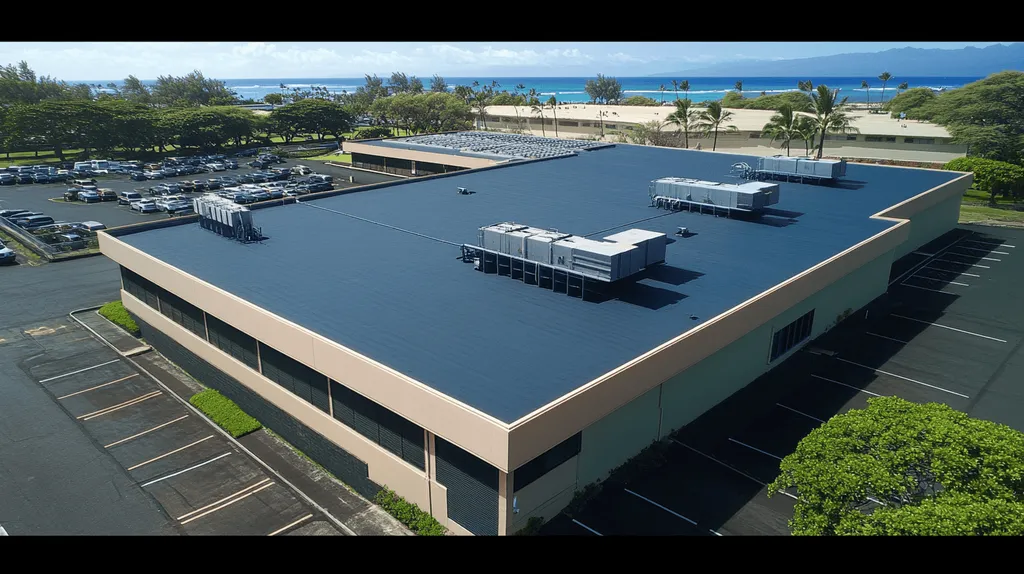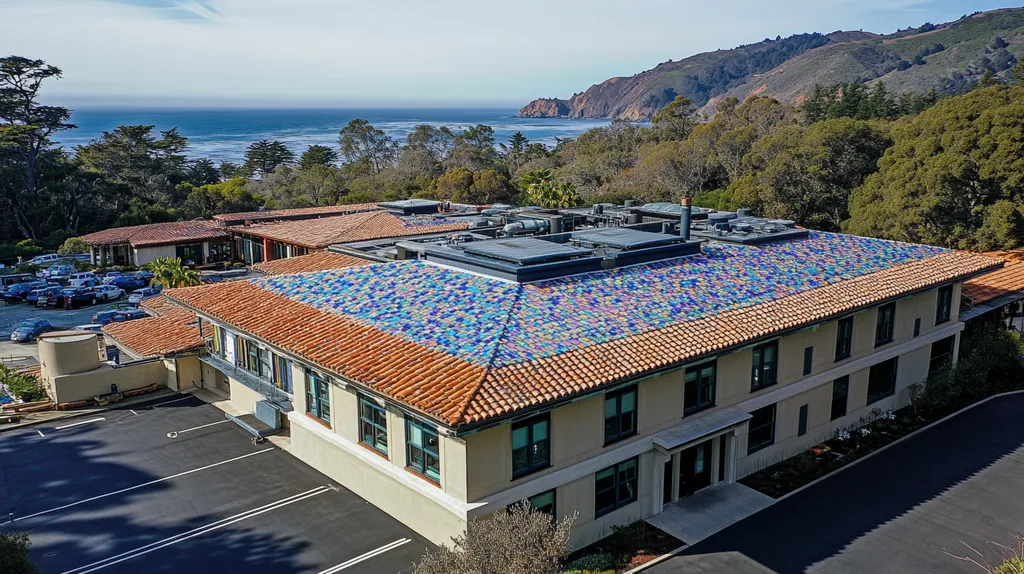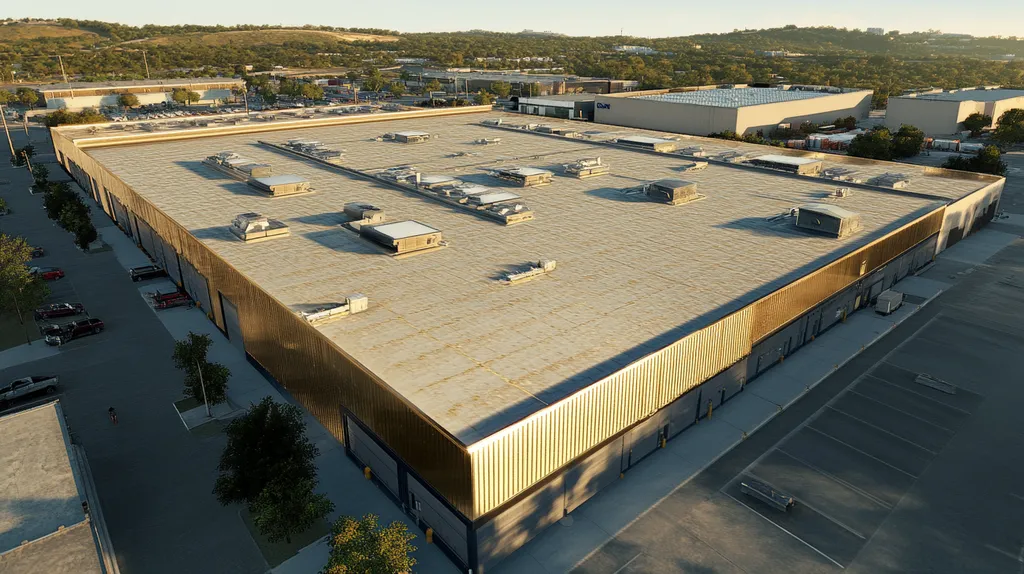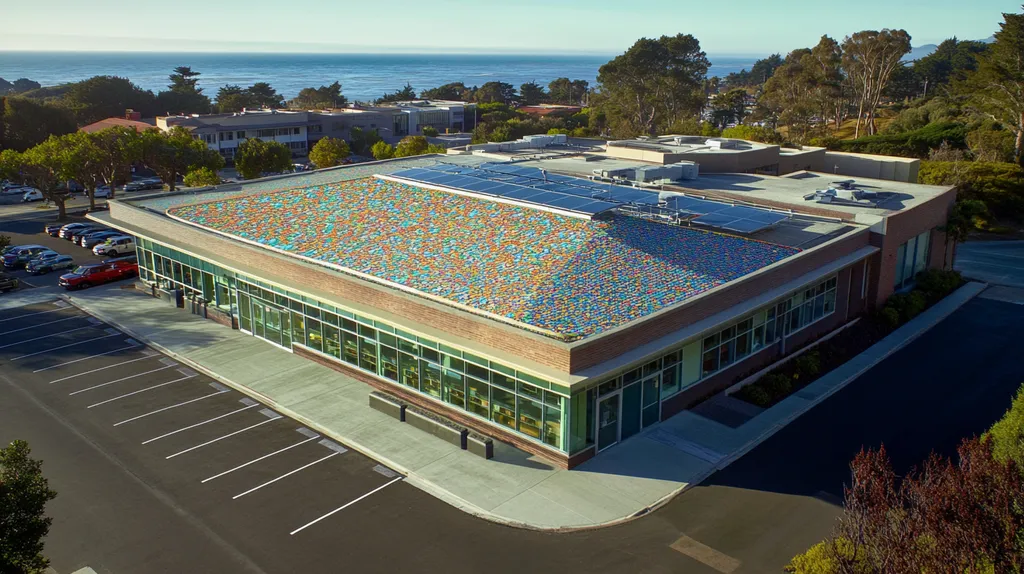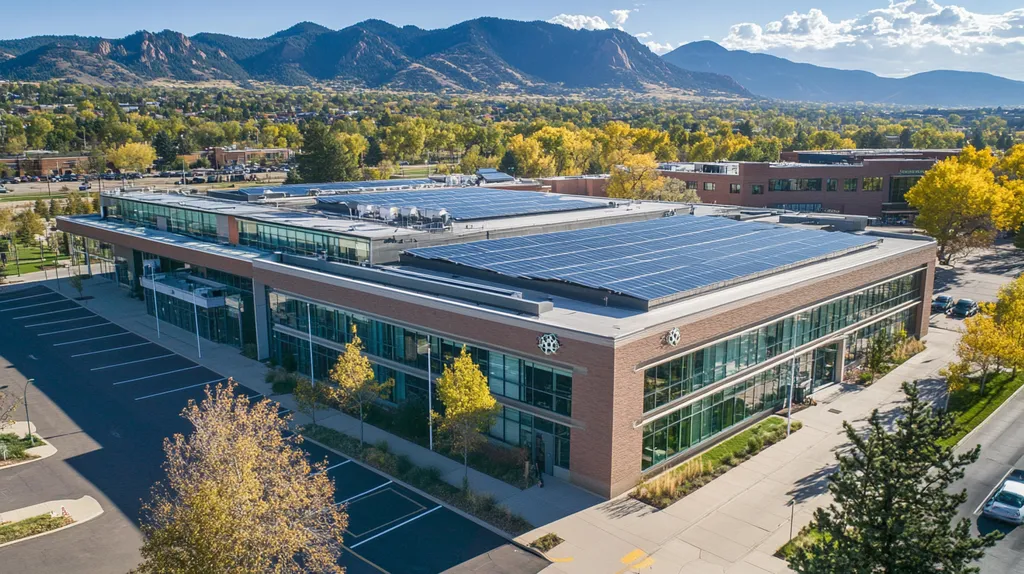Every year, commercial building owners lose millions in repair costs due to misunderstood or inadequate roof warranty coverage. Industry data shows that 68% of major roofing failures could have been prevented with proper warranty protection.
For facility managers, navigating warranty options has become increasingly complex as roofing systems advance in sophistication. Modern warranties now offer coverage periods up to 35 years with specialized protections for specific threats.
This comprehensive guide breaks down essential warranty considerations into actionable insights, helping you make informed decisions about protecting your facility’s most crucial defensive system.
SECTION 1: THE BASICS EXPLAINED
When investing in a commercial roofing system, the warranty becomes your financial safeguard against potential failures and defects. Industry data shows that unprotected roof failures can cost facility owners up to $10 per square foot in emergency repairs alone. Understanding warranty options isn’t just about paperwork—it’s about protecting your building’s most crucial defensive system and your organization’s bottom line.
What It Is (In Plain Language)
A commercial roofing warranty is your guarantee of protection against material defects, installation errors, or system failures. Think of it as insurance specifically designed for your roof’s performance and longevity.
Modern warranty programs now offer coverage up to 35 years with specialized add-ons for wind damage, puncture resistance, and impact protection, all backed by substantial liability coverage for peace of mind. (source: Schulte Roofing)
These warranties typically come in two main categories: material-only coverage, which protects against manufacturing defects, and full-system warranties that include both materials and installation labor.
The key difference lies in the scope of protection—material warranties only cover the products themselves, while full-system warranties protect against issues arising from both products and workmanship.
Why It Matters (To Your Building)
Proper warranty coverage directly impacts your facility’s operational continuity and maintenance budget. A comprehensive warranty can mean the difference between a quick, covered repair and a major capital expense.
Without adequate coverage, even minor roofing issues can escalate into significant problems affecting internal operations, equipment integrity, and inventory protection.
The right warranty program serves as a risk management tool, protecting against unexpected repairs while potentially reducing insurance premiums and increasing property value.
Quality warranty coverage also ensures access to certified contractors and genuine replacement materials, maintaining your roof’s performance standards throughout its service life.
How It Works
Warranty activation begins with proper registration immediately following installation. Missing this crucial step can void coverage before it begins.
Maintaining warranty validity requires documented annual inspections and prompt repairs using approved materials and certified contractors.
Claims processing follows a specific protocol: document the issue, notify the warranty provider within the specified timeframe, and maintain all repair records.
Understanding coverage limitations is crucial—most warranties exclude damage from natural disasters, unauthorized modifications, or improper maintenance. Regular review of these terms ensures you maintain maximum protection.
SECTION 2: PRACTICAL APPLICATIONS
Commercial roofing warranties represent a critical line of defense against potentially devastating repair costs. Research shows that unprotected roof failures can result in expenses exceeding $500,000 for large industrial facilities. Understanding the practical applications of warranty coverage helps facility managers make informed decisions about protection levels and respond effectively when issues arise.
Common Uses & Examples
Modern commercial roof warranties serve multiple protective functions, from basic material coverage to comprehensive system guarantees. Commercial property owners should evaluate coverage options based on their specific risk factors and budget constraints.
CertainTeed offers three distinct warranty tiers: Limited Material, Integrity Roof System, and No Dollar Limit (NDL) coverage, with durations extending up to 25 years for asphaltic membrane systems. Engaging in maintenance agreements can further extend these terms. (source: CertainTeed)
Material warranties typically cover manufacturing defects, ensuring replacement of defective products but excluding labor costs. This basic coverage proves valuable for quality control issues but leaves significant exposure for installation-related problems.
System warranties provide comprehensive protection, covering both materials and workmanship. These warranties often include regular inspections and maintenance requirements to maintain validity.
When You Need It Most
Warranty protection becomes critically important during severe weather events when roofing systems face their greatest challenges. Understanding coverage details before an emergency helps ensure proper response protocols.
Building modifications and renovations represent another crucial period for warranty consideration. Any alterations to the roof system must comply with warranty requirements to maintain coverage.
Aging roof systems require particular attention to warranty terms. As components near their expected service life, proper documentation of maintenance and repairs becomes essential for warranty claims.
Change in building ownership or management creates another critical juncture. New stakeholders must understand existing warranty obligations and coverage limitations to maintain protection.
Interactions With Other Systems
Roofing warranties intersect with multiple building components, creating complex coverage scenarios. HVAC units, solar installations, and satellite equipment all impact roof integrity and warranty validity.
Building envelope systems particularly affect warranty coverage. Air barriers, vapor retarders, and insulation must work in concert with the roofing system to maintain warranty protection.
Drainage systems represent a critical interaction point. Warranty coverage often depends on proper maintenance of gutters, drains, and scuppers to prevent water accumulation.
Emergency response systems like fire suppression equipment require careful consideration. Their installation and maintenance must comply with warranty requirements while maintaining building safety standards.
SECTION 3: KEY TERMINOLOGY DECODED
Warranty terminology confusion costs facility owners millions in unexpected repairs annually. Recent data shows that misinterpreting key terms leads to 40% of commercial roof warranty claims being initially denied. Understanding these terms isn’t just about compliance—it’s about protecting your investment and ensuring you have the coverage you expect when you need it most.
Essential Terms Explained
Commercial roofing warranties typically span 5 to 30 years, with 20 years being the industry standard. Understanding this duration spectrum helps facility managers select appropriate coverage levels for their building’s lifecycle. (source: IBS Roofing)
“No Dollar Limit” (NDL) warranties represent the highest protection level, covering unlimited repair costs throughout the warranty period. These warranties require strict maintenance protocols, including mandatory biannual inspections.
Material coverage addresses manufacturing defects in the roofing products themselves. This basic protection serves as your first line of defense against product failures.
Labor warranties specifically protect against installation errors. These become crucial during the first few years when most installation-related issues surface.
Industry Jargon Translated
“Membrane integrity” refers to the continuous waterproof barrier your roof provides. Any breaks in this integrity can void warranty coverage, making proper maintenance critical.
“Wind uplift resistance” measures your roof’s ability to withstand specific wind speeds. Understanding these ratings ensures your warranty matches local weather conditions.
“Thermal movement” describes how roofing materials expand and contract with temperature changes. Proper installation must account for this movement to maintain warranty validity.
“R-value” measures insulation effectiveness, directly impacting energy efficiency and warranty requirements. Higher values indicate better insulation performance.
Measurement & Units Simplified
Square footage calculations determine coverage scope and cost. One “roofing square” equals 100 square feet, the standard unit for material ordering and warranty coverage.
Slope measurements use ratios like “4:12,” indicating rise over run. These measurements affect warranty requirements and coverage limitations.
Material thickness specifications use mils (1/1000 inch). Most commercial membranes range from 45 to 90 mils, with thicker materials typically carrying longer warranties.
Load ratings indicate how much weight your roof can support. Exceeding these ratings through equipment placement or snow accumulation can void warranty protection.
SECTION 4: DECISION FACTORS
When selecting commercial roofing warranty coverage, facility managers face decisions that can impact their buildings for decades. Industry data reveals that inadequate warranty choices lead to an average of $250,000 in unexpected repairs within the first five years. The stakes are especially high for industrial facilities, where roof failures can halt operations and damage millions in equipment and inventory. Making informed decisions about coverage levels requires careful evaluation of costs, performance requirements, and long-term durability needs.
Cost Considerations
Warranty costs typically range from 2% to 15% of total roofing system costs, but this initial investment can prevent exponentially larger expenses later. Understanding the full scope of coverage helps justify premium warranty options that provide comprehensive protection.
Schulte Roofing offers warranties ranging from basic 1-year workmanship coverage to comprehensive 35-year NDL warranties with customizable protections for specific hazards like wind and impact damage. (source: Schulte Roofing)
Premium warranties often include regular inspections and preventive maintenance, reducing long-term operational costs. These services help identify potential issues before they develop into major problems requiring expensive repairs.
Facility managers must consider maintenance requirements when evaluating warranty costs. Some warranties mandate specific maintenance schedules and approved contractors, impacting both short-term budgets and long-term expenses.
Performance Trade-offs
Different warranty levels offer varying degrees of protection against common roofing issues. Basic material warranties may leave facilities exposed to workmanship defects, while comprehensive NDL coverage provides complete system protection.
Higher-tier warranties typically include enhanced technical support and priority response times for service calls. This improved service level can significantly reduce downtime during roofing emergencies.
Coverage limitations and exclusions directly impact system performance expectations. Understanding these restrictions helps facility managers develop appropriate maintenance strategies and emergency response plans.
Warranty terms often influence material and installation quality standards. Premium coverage usually requires higher-grade materials and certified installers, resulting in better overall system performance.
Lifespan & Durability Factors
Warranty duration should align with the expected service life of the roofing system. Most commercial roofs last 20-30 years when properly maintained, making extended warranty coverage a valuable investment.
Material choices significantly impact system longevity and warranty options. Premium materials typically carry longer warranty terms and better resistance to environmental stressors.
Installation quality directly affects system durability and warranty coverage. Certified installers and proper installation documentation help ensure maximum protection throughout the warranty period.
Climate considerations play a crucial role in durability expectations. Facilities in extreme environments may benefit from specialized warranty riders covering specific weather-related challenges.
SECTION 5: COMMON CHALLENGES
Commercial roofing warranty challenges cost facility owners over $3.2 billion annually in uncovered repairs. Nearly 70% of these expenses stem from preventable issues that proper warranty understanding could have addressed. The complexity of modern roofing systems, combined with evolving warranty requirements, creates a minefield of potential pitfalls for facility managers trying to protect their investments.
Frequent Problems & Solutions
Water infiltration remains the leading cause of warranty disputes, accounting for 45% of all claims. Poor drainage design, inadequate slope, and compromised membrane seams create vulnerabilities that often fall into warranty coverage grey areas.
Unauthorized roof modifications represent another major challenge. The addition of new equipment, satellite dishes, or HVAC units without proper consultation can void warranty coverage instantly. Proper planning and manufacturer approval must precede any roof penetrations.
The period of protection against latent defects requires careful documentation and prompt reporting. USDA Rural Development standards mandate specific compliance measures for warranty validity, including proper documentation of all inspections and repairs. (source: USDA Rural Development)
Temperature fluctuations stress roofing materials beyond their design limits. Proper expansion joint placement and material selection during installation helps prevent these warranty-voiding failures.
Warning Signs To Watch For
Surface blistering and membrane separation indicate underlying moisture problems. These early warning signs require immediate documentation and warranty provider notification to maintain coverage eligibility.
Deteriorating flashings around roof penetrations signal potential system failures. Regular inspection of these critical areas helps prevent warranty disputes over water damage claims.
Standing water lasting more than 48 hours after rainfall indicates drainage problems. Most warranties specify maximum ponding durations, making this condition a critical monitoring point.
Visible seam separation or membrane shrinkage requires immediate attention. These conditions often precede catastrophic failures and must be addressed while still under warranty coverage.
Preventative Approaches
Implementing a documented maintenance program protects warranty validity. Regular inspections, cleaning, and minor repairs must follow manufacturer specifications to maintain coverage.
Professional roof assessments twice annually help identify potential issues before they escalate. These inspections should align with warranty requirements for timing and documentation.
Training facility staff in proper roof access protocols prevents accidental damage. Clear communication about warranty-compliant practices helps maintain system integrity.
Creating a detailed response plan for weather events ensures proper damage documentation. Quick, appropriate action following storms or extreme conditions preserves warranty coverage options.
SECTION 6: NEXT STEPS & RESOURCES
Navigating commercial roofing warranty options requires strategic decision-making backed by reliable information. Industry data shows that facilities without proper warranty guidance face up to 40% higher lifetime roof maintenance costs. While the complexity of modern roofing systems continues to increase, facility managers must take concrete steps to protect their investments through informed warranty selection and management.
Questions To Ask Providers
Commercial roofing warranties vary significantly in their coverage scope and requirements. Begin by requesting detailed explanations of coverage triggers, exclusions, and response time guarantees for emergency situations.
GAF offers commercial roof guarantees ranging from 10 to 35 years, depending on the system chosen and contractor certification, with guarantee extensions available for additional protection. (source: GAF)
Investigate the provider’s claims process thoroughly. Request documentation of their standard response protocols, required maintenance schedules, and approved contractor networks for warranty-compliant repairs.
Ask about notification requirements for roof modifications. Many warranties become void when building owners install new equipment or make alterations without prior authorization.
Clarify the inspection and maintenance requirements necessary to maintain warranty validity. Document these requirements to develop compliant maintenance protocols.
Industry Standards & Guidelines
The National Roofing Contractors Association (NRCA) and similar organizations establish baseline performance expectations for commercial roofing systems. These standards help facility managers evaluate warranty coverage against industry benchmarks.
Building codes and local regulations impact warranty requirements. Understanding these regulations ensures your warranty coverage aligns with compliance obligations.
Energy efficiency standards increasingly influence roofing system specifications. Warranty coverage should address performance metrics related to thermal resistance and reflectivity.
Wind uplift resistance requirements vary by geographic location. Ensure your warranty coverage matches or exceeds local design requirements for severe weather protection.
Documentation standards for warranty claims continue evolving with technology. Implement digital tracking systems that satisfy current requirements while anticipating future needs.
Further Learning Simplified
Professional organizations offer specialized training programs focused on warranty management. These courses provide practical frameworks for evaluating coverage options and maintaining compliance.
Manufacturing partners frequently conduct educational seminars highlighting system innovations and warranty updates. Regular participation keeps facility teams current on emerging protection options.
Industry publications provide case studies of successful warranty implementations. These real-world examples offer valuable insights for optimizing coverage selection.
Online resources include warranty comparison tools and maintenance tracking templates. These digital aids streamline the process of evaluating and managing multiple warranty programs.
Networking with peer facility managers provides practical perspectives on warranty challenges. Regular information exchange helps identify potential issues before they impact your facility.
The Bottom Line
With over $3.2 billion lost annually to uncovered commercial roof repairs, selecting and maintaining proper warranty coverage represents a critical business decision that facility managers cannot afford to overlook.
Modern warranty programs now offer unprecedented protection levels, with coverage terms extending up to 35 years and specialized riders for specific threats like wind damage and puncture resistance.
Success requires understanding three key elements: comprehensive documentation of all maintenance activities, strict adherence to inspection schedules, and immediate reporting of potential issues.
By implementing proper warranty management protocols today, facility managers can protect their roofing investments for decades while avoiding the costly pitfalls that plague 68% of commercial properties.
FREQUENTLY ASKED QUESTIONS
Q. What is a commercial roof warranty?
A. A commercial roof warranty guarantees protection against defects in materials and installation. It ensures coverage for specific issues, providing essential financial security for facility managers. Depending on the type, warranties can range from basic material coverage to comprehensive protections that include installation issues.
Q. How do I choose the right industrial roof warranty?
A. Selecting the right warranty involves evaluating your building’s specific needs, risk factors, and budget. Consider warranty duration, coverage limits, and included services such as inspections and maintenance. The right choice balances initial costs with long-term protection benefits, reducing the risk of costly emergencies later.
Q. What are common exclusions in commercial roof warranties?
A. Common exclusions include damage from natural disasters, unauthorized modifications, or improper maintenance. Many warranties do not cover specific environmental conditions or factors that can lead to roof failures, emphasizing the importance of documentation and compliance with warranty terms to avoid unexpected costs.
Q. How important are regular inspections for industrial roof warranties?
A. Regular inspections are crucial for maintaining warranty validity and identifying potential problems early. Many warranties require documented inspections to ensure compliance, helping to prevent costly repairs and disputes. By monitoring the roof condition, facility managers can enhance roof longevity and reliability.
Q. Can modifications void my commercial roof warranty?
A. Yes, unauthorized modifications can void your warranty. Adding equipment or altering the roof structure without prior approval from the warranty provider often leads to coverage loss. It’s essential to consult with warranty providers before making any changes to avoid significant financial consequences.
Q. How can I prevent warranty claim denials?
A. To prevent warranty claim denials, ensure all maintenance is documented and performed according to specified guidelines. Promptly notify the warranty provider of any issues, adhere to required inspection schedules, and familiarize yourself with the warranty’s terms to ensure full compliance.
Q. What resources can help me manage my commercial roofing warranty?
A. Useful resources include industry associations, warranty comparison tools, and maintenance tracking templates. Engaging with professional organizations can provide valuable training and updates on warranty management practices, while networking with other facility managers can offer practical insights and shared experiences.

